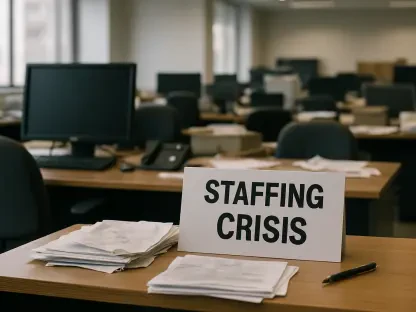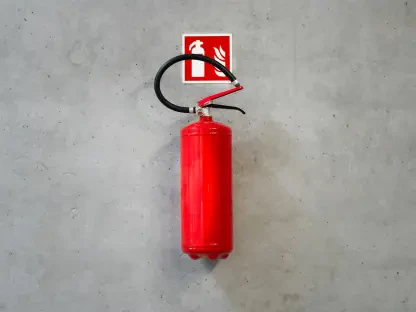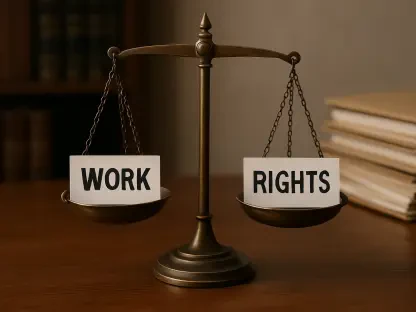In the sweltering heat of a European summer, a tragic incident in Barcelona has ignited a powerful movement among workers, bringing the dangers of extreme temperatures into sharp focus. Montse Aguilar, a 51-year-old street cleaner, lost her life to heat-related causes during a brutal heatwave where temperatures soared past 95°F (35°C). Her death became a rallying cry for hundreds of street cleaners and supporters who took to the streets on July 16, wielding banners that boldly proclaimed extreme heat as a form of workplace violence. This poignant protest underscores a growing global concern: as climate change intensifies, rising temperatures are becoming a lethal occupational hazard. From tragic individual stories to alarming statistics, the issue demands urgent attention and action. Workers are no longer willing to silently bear the burden of unsafe conditions, pushing for recognition of heat as a critical safety issue that employers must address with robust protections.
Rising Temperatures, Rising Risks
The scale of the danger posed by extreme heat is staggering, with research painting a grim picture of its impact on workers across Europe. A study conducted by Imperial College London and the London School of Hygiene and Tropical Medicine revealed that during a 10-day heatwave from June 23 to July 2, a staggering 2,300 heat-related deaths were recorded across 12 European cities. Of those, 200 were individuals of working age, highlighting how the workplace can become a deadly environment under such conditions. Further compounding this tragedy, the International Labour Organization has reported a 42% increase in heat-related workplace deaths in Europe since the turn of the millennium. Additionally, the European Trade Union Confederation has noted a 5 to 7% spike in work-related accidents when temperatures climb above 86°F (30°C). These numbers are not mere statistics; they represent real lives lost and injuries sustained, emphasizing the urgent need for systemic changes to protect vulnerable workers from the escalating threat of heat.
Beyond the raw data, the human toll of extreme heat in workplaces reveals a pattern of neglect that cannot be ignored. Many laborers, especially those in outdoor roles like street cleaning or construction, face grueling conditions with little respite or protective measures in place. The case of Montse Aguilar is far from isolated; it is a stark reminder of how workers are often left exposed to dangerous temperatures without adequate safeguards. Employers frequently prioritize productivity over safety, leaving staff to endure sweltering environments without access to sufficient water, shade, or breaks. The rising frequency of heatwaves due to climate change only exacerbates this crisis, turning what was once a seasonal concern into a year-round peril. As unions and activists amplify their calls for action, the focus shifts to whether industries will step up to implement life-saving policies or continue to risk lives in the face of undeniable evidence of harm.
Grassroots Action and Union Campaigns
Across Europe, workers and unions are mobilizing to combat the deadly effects of extreme heat, refusing to let the issue fade into the background. In the UK, the Trades Union Congress (TUC) orchestrated a week of action on workplace heat from July 13-18, strategically timed during what is often the hottest period of the year. Although milder weather tempered the immediate impact of this campaign, the initiative underscored the importance of proactive preparation. Health and safety inspections were conducted to raise awareness, while educational efforts aimed to inform workers of their rights during dangerously hot conditions. Meanwhile, activists from Workers Liberty have been engaging employers in sectors such as education and healthcare, negotiating for climate-resilient workplaces. These grassroots movements reflect a growing determination among employees to demand environments where their well-being is prioritized over profit, signaling a shift toward collective responsibility.
The momentum of these campaigns is bolstered by a shared recognition that individual action alone is insufficient to tackle such a pervasive issue. Union-led initiatives provide a structured platform for workers to voice concerns and push for tangible improvements, whether through policy changes or on-the-ground interventions. In many cases, these efforts have led to small but significant victories, such as securing commitments from employers to provide cooling equipment or adjust work schedules during peak heat. However, challenges remain, as not all workplaces are unionized, and resistance from management can stall progress. The protests in Barcelona serve as a powerful example of how public demonstrations can amplify workers’ demands, drawing media attention and public sympathy to the cause. As these movements gain traction, they pave the way for broader societal acknowledgment that extreme heat is not just a natural phenomenon but a preventable workplace hazard requiring immediate and concerted action.
Legal Frameworks and Worker Protections
Legally, there are mechanisms in place to protect workers from the dangers of extreme heat, though their application often falls short of what is needed. In the UK, while no specific maximum working temperature exists, regulations like the Health, Safety and Welfare Regulations 1992 require employers to maintain a “reasonable indoor temperature” and provide thermometers for monitoring. The Health and Safety at Work Act 1974 further obligates employers to ensure safety as far as reasonably practicable, a duty that extends to both employees and the public. Additionally, under Section 44 of the Employment Rights Act 1996, workers have the right to refuse unsafe work without penalty if they believe there is a serious and imminent danger, such as temperatures exceeding the TUC’s recommended threshold of 86°F (30°C). These laws offer a foundation for workers to demand safer conditions, but their effectiveness hinges on awareness and enforcement, which remain inconsistent across industries.
Strengthening these legal protections requires more than just statutes on paper; it demands active engagement from workers and their representatives to hold employers accountable. The Safety Representative and Safety Committee Regulations 1977 empower employees to elect safety reps who can conduct inspections, raise concerns, and receive paid time off for training. These roles are crucial for gathering evidence of unsafe conditions and educating coworkers about their rights. However, a significant gap exists in many workplaces where union representation is weak or nonexistent, leaving workers vulnerable. Bridging this gap involves encouraging more individuals to step into safety roles and fostering a culture of accountability where employers bear the cost of climate-related risks. Without organized, collective efforts, legal frameworks risk becoming hollow promises, failing to translate into the real-world protections that workers desperately need in the face of escalating heat.
Building a Safer Future Through Collective Effort
Reflecting on the tragic events and powerful protests that unfolded, it became evident that extreme heat had claimed far too many lives in workplaces across Europe. The heartbreaking loss of individuals like Montse Aguilar served as a somber reminder of the human cost of inaction. Studies had laid bare the scale of the crisis, with thousands of heat-related deaths and a sharp rise in workplace accidents during high temperatures. Union campaigns and legal frameworks had provided a glimmer of hope, offering tools and platforms for workers to demand change.
Looking ahead, the path to safer workplaces must involve stronger union organization and enhanced safety representation to ensure employers prioritize heat mitigation. Governments and industries should invest in protective measures, from providing cooling equipment to revising work policies during heatwaves. Ultimately, the battle against extreme heat as a workplace hazard calls for sustained collective action, ensuring that no worker pays the ultimate price for climate change.









